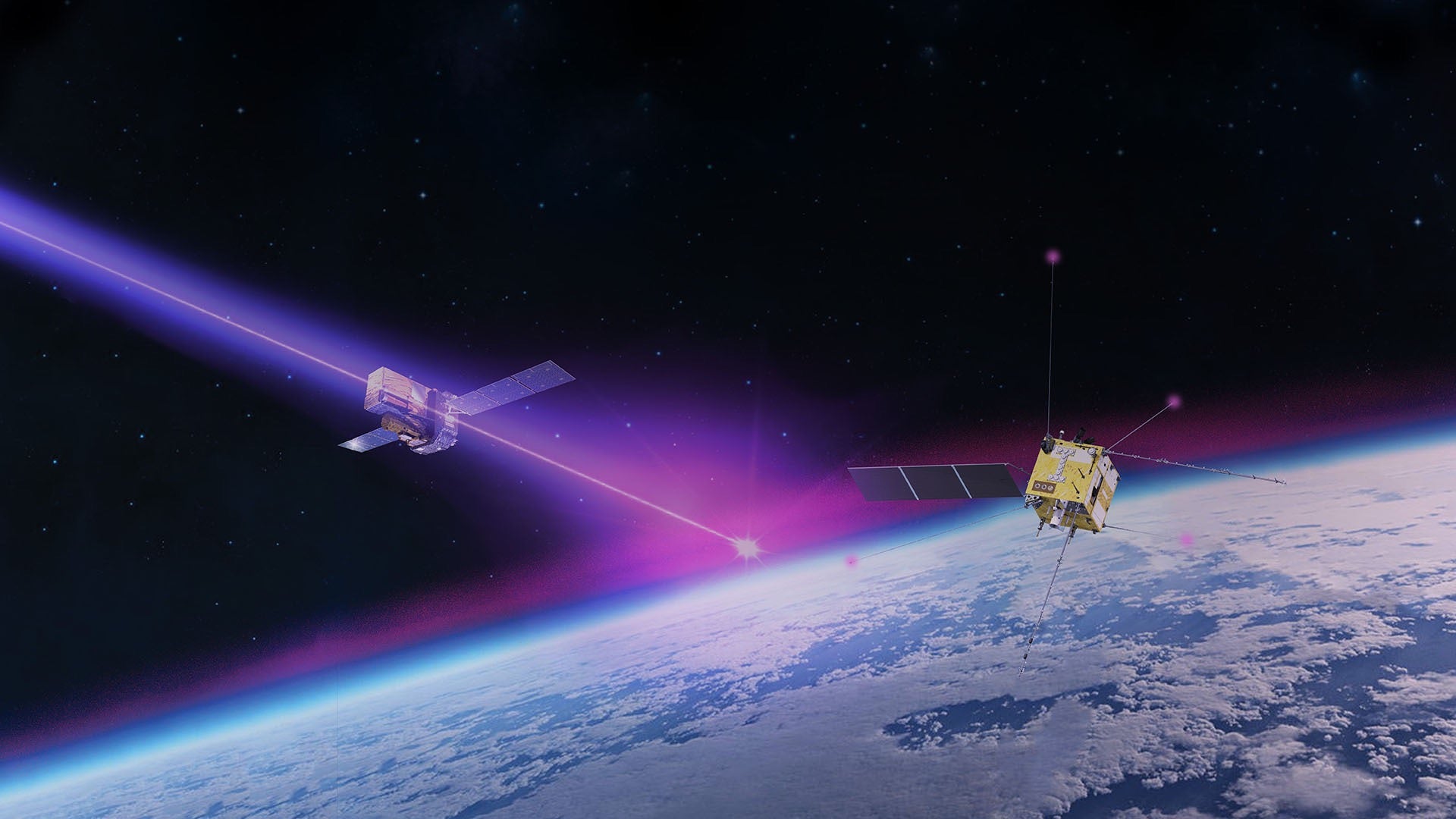 An artistic impression of a gamma-ray burst from a galaxy almost two billion light-years away. Credit: ESA/ATG Europe; CC BY-SA 3.0 IGO
An artistic impression of a gamma-ray burst from a galaxy almost two billion light-years away. Credit: ESA/ATG Europe; CC BY-SA 3.0 IGO
It came from somewhere 2 billion miles away. And when it arrived in October of 2022, the gamma-ray burst lit up the entire ionosphere.
Now astronomers are working in a whole realm of “new physics we are trying to understand,” according to astronomer Mirko Piersanti of the University of L’Aquila in Italy.
The event isn’t new to science. It’s a kind of hyper-energetic stream of protons created by, essentially, destruction. To charge a photon to the wavelengths at the far end of the electromagnetic spectrum, you need an event so energetic that, in some cases, it creates a hole in space-time. Like a star snuffing out in a violent supernova and collapsing into a black hole, which is one of the scenarios Piersanti says might have caused this particular gamma ray.
So why is this “new” physics? The event, known as GRB 221009A, was the first time astronomers observed the effects of a gamma- ray burst on the upper ionosphere. Measurements going back to at least 1994 have relied on observations of the lower ionosphere.
Piersanti and other collaborators, who are part of the CSES-Limadou Collaboration, worked to piece together data from several gamma-ray space observatories about the event, especially leaning on data from the European Space Agency’s (ESA’s) INTEGRAL satellite. The team published its results in Nature Communications.
“The arrival of all these energetic photons completely changed the conductivity of the ionosphere in terms of ionization, and this produced currents in the ionosphere that were not expected at the latitudes we measured,” Piersanti says. The event was measured at around 310 miles (500 kilometers) above Earth’s surface. These effects are all new to astronomers — including that the electrical field fluctuated while the magnetic field didn’t.
Piersanti says the event came in three ways — a sort of “precursor” event that peaks and dips just before a massive spike in energy. Then there’s a third spike and peak, less energetic than the second but more energetic than the first. Each peak was powerful enough to affect the entire ionosphere, the sort of thing that typically only the Sun is capable of when it spews out a stream of particles that light up this high-atmospheric layer as a brilliant aurora.
This space symphony — really a series of giant clangs — are what lead Piersanti and his colleagues to think it could be from the death of a star. The first peak is the supernova, when a star sheds its outer layers because its core has collapsed. The second signal is the continuing collapse of the core, now laid bare and ready to consume matter around it. The third peak is part of this stage as well.
It also wasn’t a quick event, but a stream of gamma ray particles bombarding the ionosphere for more than seven hours after the second peak hit.
There is the possibility, Piersanti says, that while still a supernova event, it’s not necessarily showing the black hole so much as different stages of a stellar explosion. In this case, the first peak is the collapse of the star, and the second peak is the explosion. (Not all supernovae create black holes; some create dense remnants called neutron stars.)
As part of the experiment, Piersanti and team modeled what would have happened if a comparably strong burst — which was already among the strongest ever detected — happened inside our galaxy.
“We developed a very simple model for the consequences of a gamma-ray burst in the upper atmosphere — we asked what could happen in the atmosphere, if the gamma-ray burst or something like that comes from inside of our galaxy,” Piersanti says. “And the results of the model for the worst case was that the entire ozone layer would be completely depleted.” The consequences would be huge, as all life on Earth would begin receiving destructive ultraviolet radiation from the Sun not mitigated by our atmosphere’s shield.
Mercifully, this gamma ray was far away, so we’re pretty safe from these drastic effects — and indeed, no stars are really expected to go supernova in our local neighborhood for a while. The closest star that could go supernova, Betelgeuse, is likely of no danger to Earth. And there’s also the possibility that the supernova hypothesis is wrong for this gamma ray burst and something else caused it.
But the event, for now, is about finding out about the powerful events in our universe and trying to understand their effects. If a similar one arrives, astronomers will have something to compare it against, and have more data to work with to solve some of the mysteries in this new realm of physics.





